MI Summit Advances Workforce Solutions
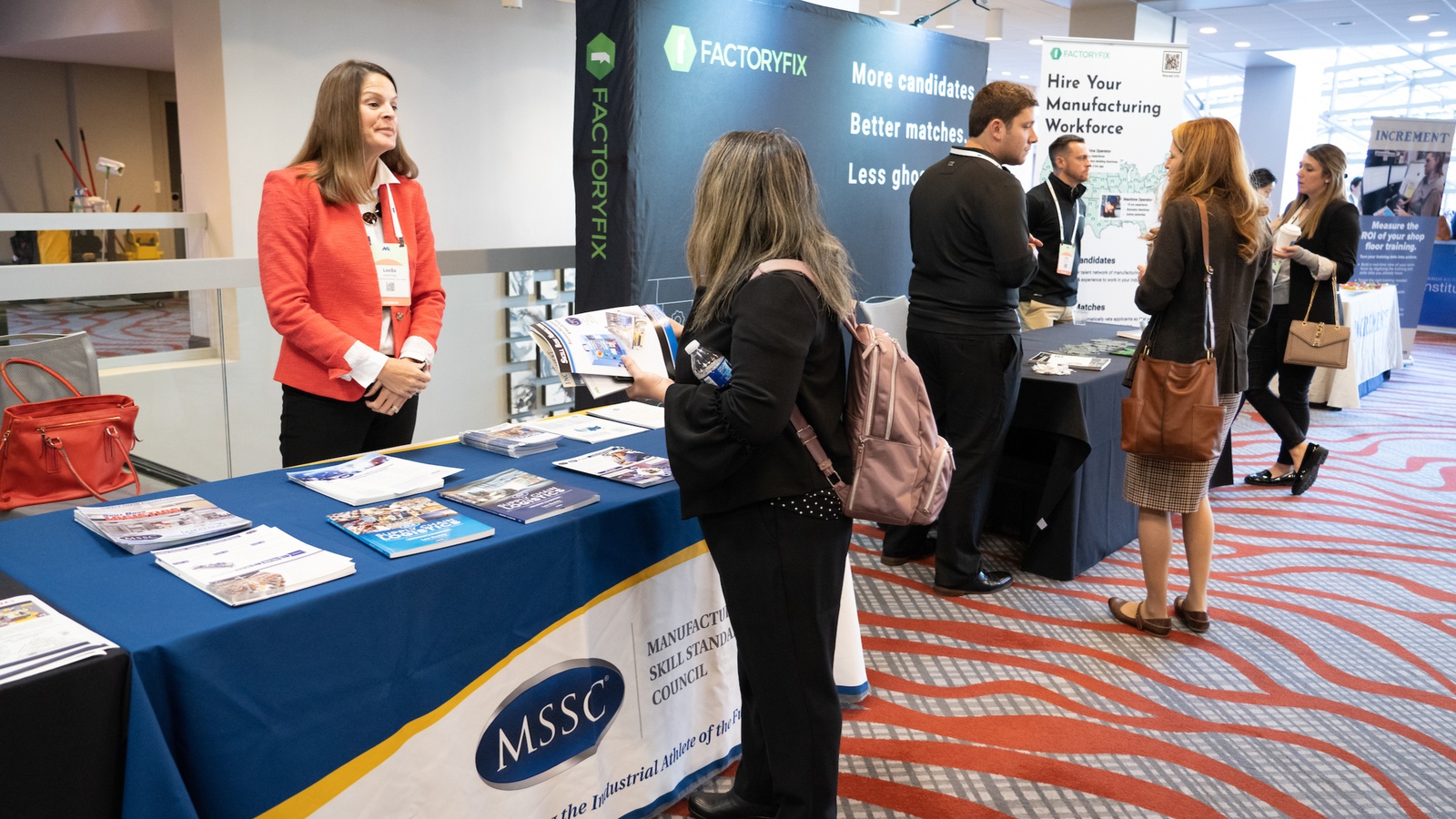
Last year, The Manufacturing Institute—the workforce development and education partner of the NAM—came to a realization: There were manufacturing conferences and there were workforce conferences, but neither addressed manufacturing-workforce challenges from a broad, national perspective. The MI wanted to change that.
And it did, just this month—with the inaugural, now-annual, MI Workforce Summit.
What it is: The summit, held this month in Cincinnati, Ohio, is a first-of-its-kind, multiday event that brought manufacturers, educators, community partners, association leaders and more together to network, attend workshops and hear talks from manufacturing and workforce leaders. All of them had the same goal: to build the manufacturing workforce of today and tomorrow to ensure the industry’s competitiveness.
- Made possible by sponsors including the Arconic Foundation, WestRock, FactoryFix, the Manufacturing Skill Standards Council and EY, and supported by the Ohio Manufacturers’ Association, the summit drew more than 300 participants.
- Half the attendees were manufacturing employers and half were from the MI’s leading partners.
- “Forging partnerships isn’t a theme, it’s an action item,” said Arconic Foundation President and Treasurer Ryan Kish. “Come up with concrete actions for your organization on how you’re going to go into the community and forge partnerships to tackle the manufacturing workforce challenge.”
What happened: The summit, with its theme of forging partnerships, resulted in the creation of more than 920 new connections among workforce stakeholders. It focused on three “areas of importance”: attracting, training and retaining quality employees and how partnerships enable success across all three. Specific events at the summit included:
- A plenary fire-side session on how partnerships helped Toyota and the entire manufacturing sector grow in northern Alabama;
- Breakout sessions focused on a range of key issues, including how parents and teachers help manufacturers attract talent, how the workforce can prepare for automation and how economic developers are now assisting in workforce development;
- Newly released research from the MI on adaptive skills and future skills needs;
- A plenary on the impact of culture on employee retention;
- Interactive Q&As on recruiting, training and retaining employees; and
- A session on how corporate and foundation grants can improve the manufacturing workforce ecosystem.
“Hidden” talent: A frequently untapped pool of potential workers—individuals with previous involvement in the criminal justice system—was another topic of discussion at the summit.
- One in four adults in the U.S. has a criminal record, according to the National Employment Law Project. Many companies have had success in hiring people with criminal records, which has led more manufacturers to begin recruiting “second chance” hires.
- A leader in these hiring practices is JBM Packaging, whose director of human capital and culture, Valerie Plis, spoke at the summit.
Hiring veterans: Military veterans are another group of promising potential hires, as speakers advised the attendees.
- More than 200,000 men and women transition out of the U.S. military and into civilian life every year, according to the Labor Department.
- The MI’s Heroes MAKE America program seeks to attract many of them to the manufacturing industry, by building connections between the military and veteran communities and companies seeking top talent.
Growing talent: The summit dove into another successful workforce solution model: the Federation for Advanced Manufacturing Education (FAME), created by Toyota in 2010 and transitioned to the MI in 2019.
- FAME, which recently wrapped up its own annual national conference, combines strong technical training and professional skills development with hands-on manufacturing work experience to create global best-in-class entry-level technicians. In just three years, it has spread across the U.S. and now has more than 400 manufacturer partners.
- From 2021 to 2022, the program saw an 18% increase in the number of participants, according to MI President Carolyn Lee.
The last word: In her remarks, Lee encapsulated the central idea behind the new summit: “When we pioneer solutions together, we’re stronger than when we work alone.”
Creators Wanted Moves the Needle in Decatur
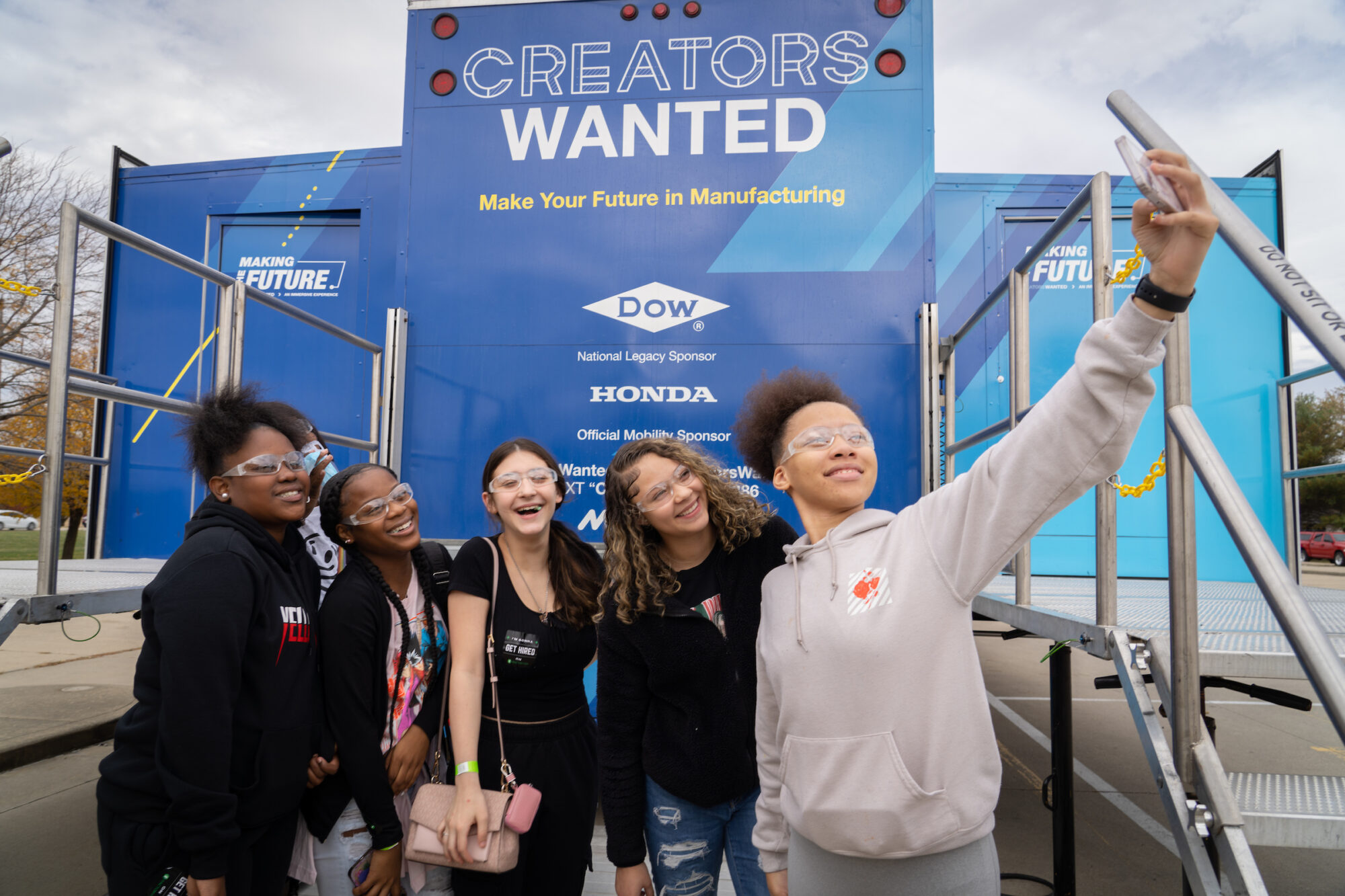
While participants were having fun at this week’s Creators Wanted stop in Decatur, Illinois, the nationwide tour and its mobile experience were doing something, too: moving the needle on people’s perceptions of modern manufacturing.
What went on: Over the course of three days, more than 800 students from 13 area middle schools, high schools and community colleges poured into Richland Community College to learn about manufacturing careers. Also present were many educators and parents.
- Attendees “raced to the future” in the Creators Wanted mobile experience, solving various manufacturing-related challenges as they wound through the escape room.
- They heard panel talks from manufacturing leaders and team members and learned about some of the industry’s many perks, including great wages, flexible schedules, upward mobility, chances to earn and learn and more.
- Interactive activities, set up and run by manufacturers and the campaign’s recruiting partner, FactoryFix, were designed to garner interest—and display some of the real work done every day in modern manufacturing.
- This included virtual-reality paint and assembly training from Creators Wanted host sponsor Caterpillar, as well as a hazard-awareness simulator, a drink-making station and a laser-system exhibit from host sponsor ADM. Richland Community College took students on a tour through its state-of-the-art lab.
Generation inspired: Manufacturing leaders at ADM, Caterpillar and the Illinois Manufacturers’ Association, which together brought the tour to Decatur, got the chance to galvanize crowds.
- Said IMA President and CEO Mark Denzler: “Manufacturing makes the world a better place to live every day. Some of you are going to find the next cure for a disease. You’re going to build the next robot.”
- “For anyone who really is looking for a career that you can get into that is good-paying, that will provide you an opportunity to progress, consider manufacturing,” Caterpillar Group President of Resource Industries (and NAM Executive Committee member) Denise Johnson told the crowd.
- Following the event, students were indeed inspired. “It kind of changed my mind on what I want to do in the future,” one student
- “It was amazing,” said another. “I’d think about doing this for a career.”
Shoring up the shortage: The lack of skilled workers has been a pain point for manufacturers for several years now—and it’s a problem Creators Wanted aims to fix.
- “Programs like Creators Wanted are crucial in narrowing the workforce shortage in manufacturing and also showcasing the many opportunities within the manufacturing industry,” said ADM Senior Vice President of Global Operations and NAM board member Veronica Braker.
The impact: The tour stop made a splash in regional media, garnering overwhelmingly positive broadcast coverage and print mentions and placements (see here and here).
Meeting people where they are: “How do you get more young people interested in the field [of manufacturing]?” 25 News WEEK-TV anchor Erin Brown asked in a segment for the Peoria, Illinois, news station. “The answer could be more hands-on experiences with businesses like Caterpillar and ADM.”
Phoenix Closures Invests in Diversity and Inclusion
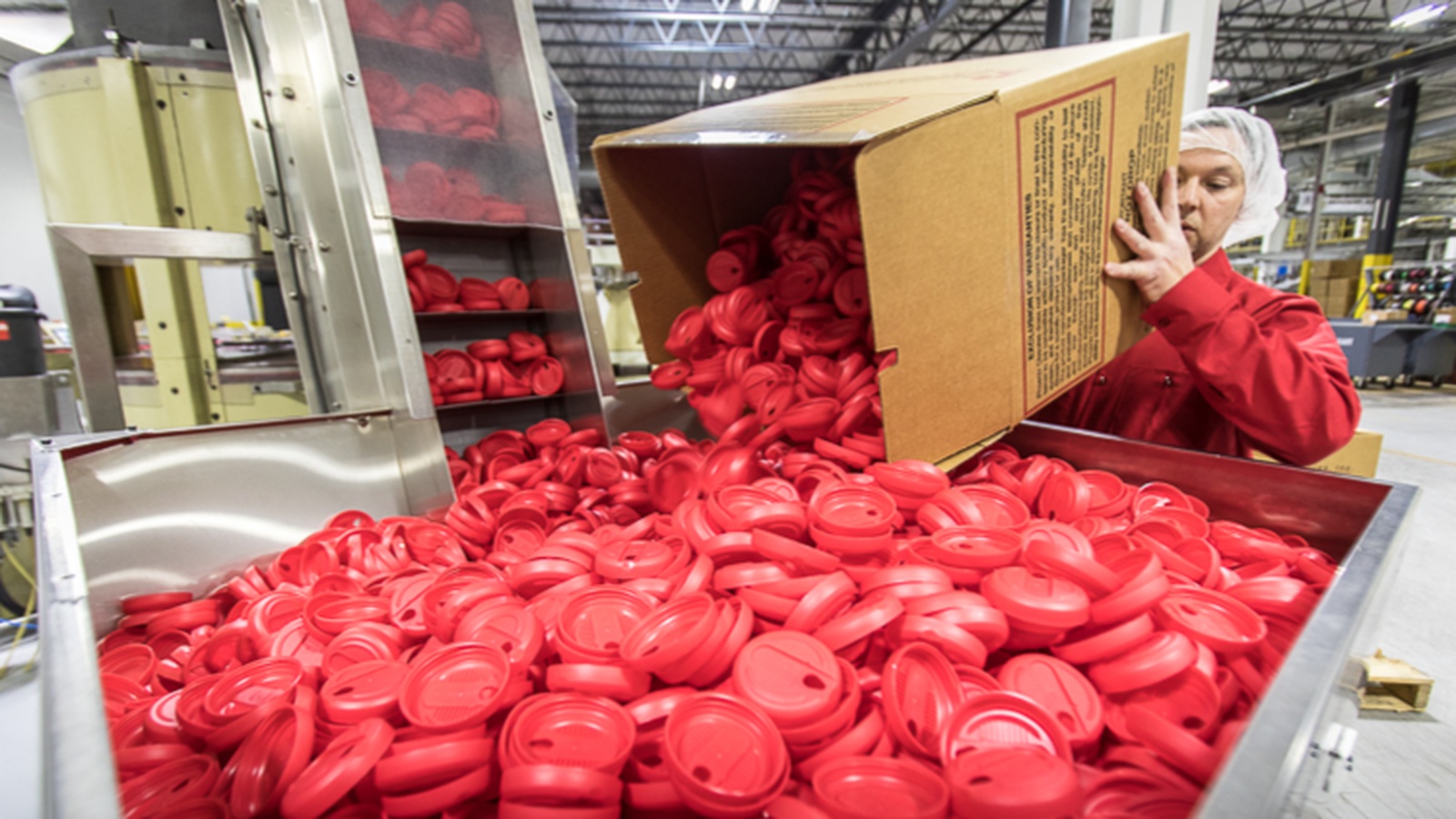
Manufacturers come from many different communities and backgrounds—and Phoenix Closures, a sixth-generation, family-owned business that makes packaging and closures, wants to make sure that all of them feel welcome in the industry. In the past few years, the company has created a D&I initiative that ensures their employees feel included in and excited about the place where they work.
Getting the ball rolling: The company began by installing a leader to oversee their D&I efforts and combine programming and support into one place. Vice President of Quality and Corporate Social Responsibility Meena Banasiak—a 2020 honoree at the Women MAKE Awards, formerly known as the STEP Ahead Awards—sees her role not only as that of a leader, but as proof of Phoenix’s commitment.
- “I’m part of our progress in terms of D&I at Phoenix,” said Banasiak. “This position I am in was created in order to have someone in the role to establish a framework for corporate social responsibility. This position had never previously existed.”
- “We knew as a business that we were in many ways doing a lot of things that would fall within a D&I program, but without that clear purpose and intention and definitive resources put behind it.”
- “So, in a very visible and important way, I had the opportunity to be in a position of leadership and join the executive staff as a woman of color and set the course for the nature of this work that we
’ve been pursuing.”
Developing programs: The company has created and implemented a range of initiatives that allow employees to connect and contribute.
CSR committee: Phoenix developed an employee resource group that is focused on corporate social responsibility and includes representation from all the company’s operating locations. Employees are encouraged to voice their ideas on the types of programs that could be offered to the workforce, and the group offers tools and resources to help members implement programs at their respective sites.
- “It’s great to have a way to give people that voice, to make the work environment something
 that enables us to feel more included,” said Banasiak. “Yes, we’re here to do good work, but we might just be able to have fun while we’re doing it! We want our employees to feel comfortable bringing their whole selves to work if they want to and develop more profound relationships in the process.”
that enables us to feel more included,” said Banasiak. “Yes, we’re here to do good work, but we might just be able to have fun while we’re doing it! We want our employees to feel comfortable bringing their whole selves to work if they want to and develop more profound relationships in the process.”
Parental leave: The company has expanded its parental leave benefits. Today, all full-time employees are eligible for the program, and the benefit applies to the non-birthing parent as well—including in cases of adoption.
- “There are people who have been able to take advantage of it right away—and just hearing their personal story, and their sense of relief knowing they have this support from their company—it’s unfettered relief,” said Banasiak. “It goes a very long way toward cementing the relationship between employer and employee, when you feel like your employer is invested in you.”
Volunteer time off: Phoenix’s full-time employees are encouraged to take up to eight hours of paid time off per calendar year to volunteer with the charitable organization of their choice—either individually, or as part of a team.
- “There have been a few different events where a group of employees have gone together, so it simultaneously serves as a teambuilding exercise with a broader impact,” said Banasiak. “At the same time, we get to share the stories of these experiences and celebrate those organizations that our employees find meaningful to them. Excitement breeds further excitement.”
Pledge for Action: Phoenix was a signatory of the NAM’s Pledge for Action, which committed the manufacturing industry to taking 50,000 tangible actions to increase equity and parity for underrepresented communities, creating 300,000 pathways to job opportunities for Black people and all people of color, and reflecting the diversity of the overall U.S. workforce by 2030.
Starting small: According to Banasiak, it’s important to be sensitive to needs across the entire company, but also to create small forums where employees can feel comfortable discussing issues. By empowering employees to come forward with ideas, a company can unleash the creativity, energy and enthusiasm of a diverse workforce.
Building the habit: “At first you might be in a place that feels more performative rather than substantive, but it’s still a legitimate starting point,” said Banasiak.
- “We never before made an intentional effort to acknowledge Hispanic Heritage Month or Black History Month. By now, our employees are creating and hosting their own events—but before that, our first step was literally a single email to the organization.”
- “I’d argue that first step is every bit as necessary and valid on this journey. Just making that conscious effort—that’s going to be meaningful to someone. It’s necessary to build that habit in small ways to create an environment where ideas start to flow. The motivation builds upon itself, but you have to start somewhere.”
The bottom line: “Results are not instantaneous or something that one person can achieve,” said Banasiak. “It’s about slowly shifting the narrative.”
A Small Manufacturer on What Policymakers Can Do for Her Company
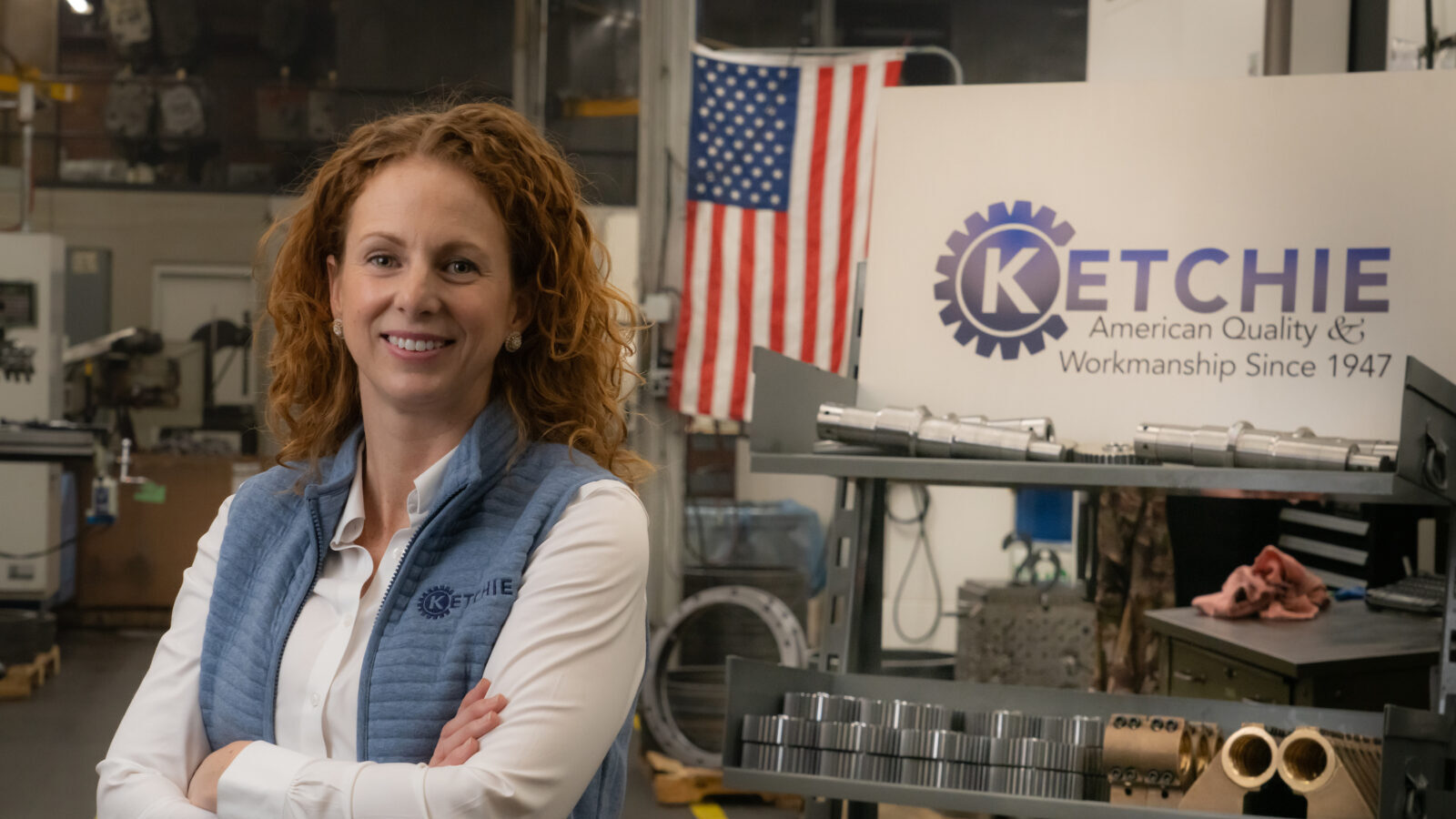
Courtney Silver runs a precision machining company that has been in business for 75 years, so she knows how fast the manufacturing industry evolves. The Ketchie, Inc., president, who serves as the vice chair of the NAM’s Small and Medium Manufacturers Group, has a clear message for policymakers and manufacturers alike.
- To stay competitive, “manufacturers must have policies that incentivize us to save for emergencies, like pandemics, and to use profits productively to invest in machines, technologies and people,” she says.
- “Small manufacturers know what to do, to invest our profits and grow”—and policymakers should let them get on with it.
We caught up with Silver earlier this fall and chatted about her plans for Ketchie, the policies that would support manufacturers’ competitiveness and more.
The history: Seventy-five years ago, her late husband’s grandfather came home from World War II to work in a local textile mill, Silver tells us.
- The former Air Force captain quickly observed that local manufacturers needed a “job shop” to provide precision machined solutions. In 1947, he founded the company.
- Since then, and through many upgrades in technology, the business has grown considerably. It now supports several industries, including “textile, rail, heavy machinery, agriculture and industrial equipment,” says Silver.
In the family: Silver joined the business in 2008, then took over as president after her husband passed away in 2014. Through all her years there, she says, “investing in the lives of the people I work with and providing them with opportunities to develop and grow their God-given talents has been what matters the most” to her.
- That dedication spills outward into the community. Silver and the company are deeply invested in their work with the North Carolina Manufacturing Institute, numerous local schools, the local Boys & Girls Club and the Cooperative Christian Ministries.
What do small manufacturers need? To help small manufacturers stay competitive and keep contributing to their communities, “we need a tax structure that works for us,” says Silver.
- The 2017 tax reform law benefited Ketchie by allowing large manufacturers to expand, meaning they had more orders for Ketchie. The company was able to hire more workers as well as provide raises and bonuses.
- However, small manufacturers need further support from policymakers, according to Silver. “Smaller manufacturers have access to less capital,” she explains, so they must often use their profits for crucial short-term investments, like new equipment.
- But they also need help from policymakers for longer-term efforts, such as saving for emergencies (including pandemics) and using their profits to aggressively attract and retain a high-quality workforce.
The absence of a tax structure that supports all these endeavors together “hinders innovation and growth and limits our ability to compete,” Silver points out.
A promising future: When asked how new technologies are helping small manufacturers innovate, Silver responds enthusiastically: “That’s why I love the industry so much—the machining technology is transformational for small businesses in our industry.”
- Ketchie has kept up with the latest innovations throughout its history. Back in the 1980s, that meant purchasing its first CNC (computer numerical control) machines for more efficient, precise machining.
- Today, it’s automation. The company’s first machine-tending collaborative robot will debut on the factory floor in November, taking over machinists’ “least favorite” part of the job—changing parts while the machines run. The robot will free up workers for more challenging and skilled work around the shop, as well as dramatically increase productivity by running unattended after shift hours, Silver says.
- Technology has “opened up” manufacturing, as she puts it. Automation, 3D printing, additive machining and more have “sped up the lifecycle from the idea to the finished part.”
People first: Technology may be evolving rapidly, but the need for a high-quality workforce remains the same. When asked about her plans for Ketchie’s future, Silver says that “the number-one challenge, again and again, is workforce.”
- Silver aspires to strengthen Ketchie’s community outreach by teaching semester-long classes in the shop for high school students, which will include mentorships and a character development curriculum along with job shadowing on the shop floor.
- Ketchie also plans to continue its leadership role in its community as an active member of the school program board, and by continuing to open its doors to tours, interns and apprentices.
- “Making these long-term investments in our youth, in our industry and in our team is foundational to who we are, and we are thankful for all of the opportunities to help shape our future workforce in manufacturing,” says Silver.
The next generation: For the president of a family company, this question must be inevitable: Will Silver’s children run the business, too?
- “Time will tell for sure. They both show strong leadership qualities and are interested in what we are accomplishing at Ketchie. My son has a lot of fun with a 3D printer at home, and my daughter already has excellent problem-solving skills. It’s going to be interesting to see!”
At the NAM: About her work at the NAM, Silver says, “I want to see a genuine opportunity for small and medium manufacturers to grow, thrive and successfully compete.”
- “Each SMM member should feel truly valued and know they have a place at the NAM. Their story, and what they do every day, matters to manufacturing in America.”
NAM Board Leaders Headline Creators Wanted Kickoff in Decatur
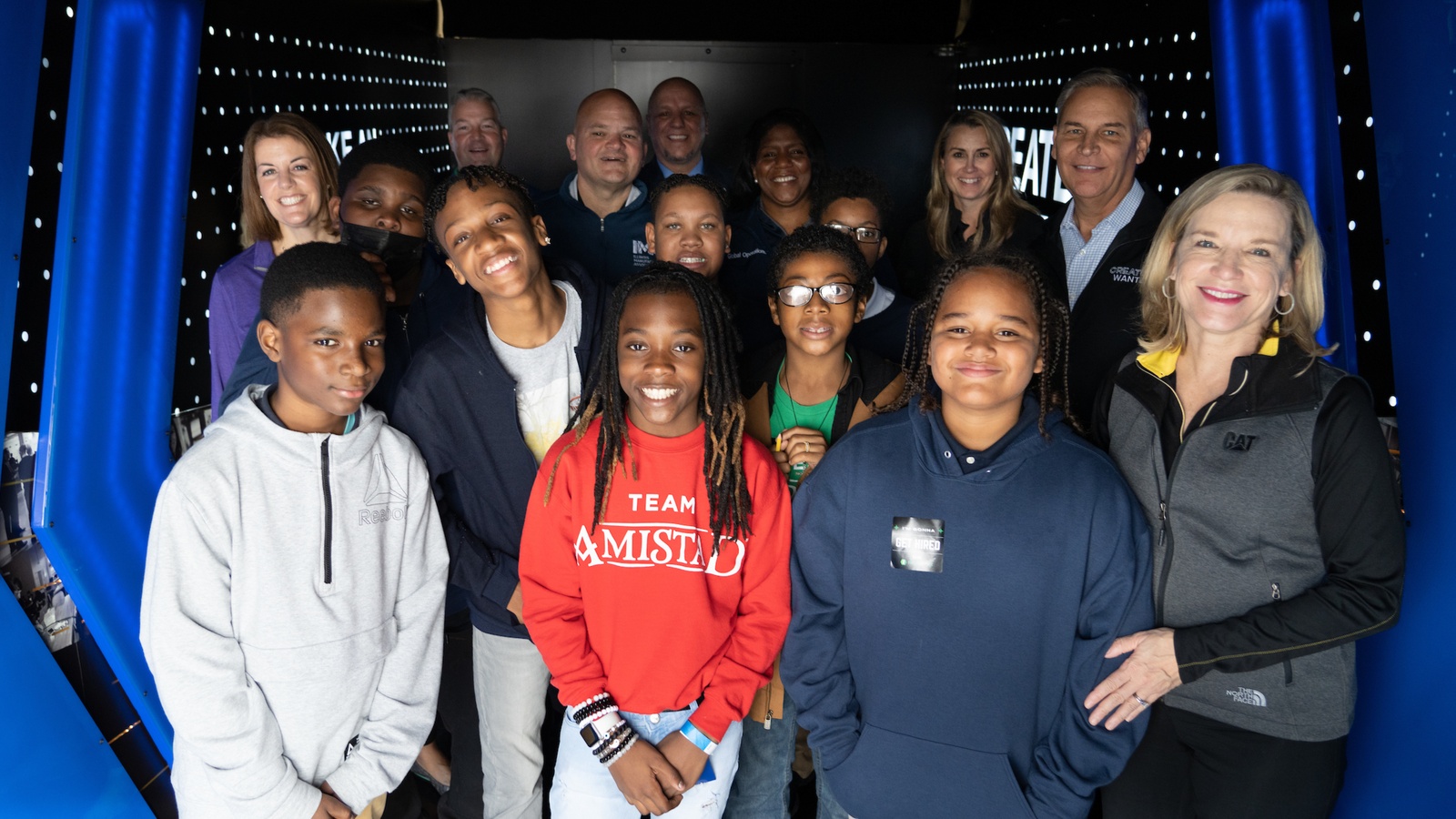
Two of manufacturing’s top executives took centerstage yesterday as a part of the industry’s largest perception campaign to build the workforce of the future—by helping educators, parents and other career mentors coach students on their career journeys.
- Caterpillar Group President of Resource Industries (and NAM Executive Committee member) Denise Johnson and ADM Senior Vice President of Global Operations (and NAM board member) Veronica Braker joined NAM President and CEO Jay Timmons, Manufacturing Institute President Carolyn Lee, Illinois Manufacturers’ Association President and CEO Mark Denzler and other notable state, community and education leaders to kick off the Decatur, Illinois, stop of the Creators Wanted Tour at Richland Community College.
- More than 120 students from American Dreamer STEM Academy attended the kickoff event. (More than 800 students are expected over the tour stop’s three days.) There they heard manufacturing leaders’ perspectives before exploring the various exhibits and activations showcasing the many opportunities in modern manufacturing.
Power of visibility: “Not everyone has a perspective or has heard from someone who looks like me or is from the same place,” said Braker, who is also on the global nutrition company’s Executive Council. “But together, we can change one event at a time.”
- “While pursuing my degree in chemical engineering, I interned with several manufacturing companies. … For me, manufacturing was always an attractive choice due to the fast pace, the energy, as well as the opportunity to solve problems while working as a part of a team, making a real impact on people’s lives,” emphasized Braker.
- On the rewards of her own manufacturing career, spanning more than a quarter of a century in operations leadership, Braker pointed out, “I’ve made lifelong friends. I’ve been exposed to innovative technologies that will change the way that people and generations live forever.”
Teamwork and growth drove Johnson’s path into manufacturing—and an ascent to the upper echelons of the world’s leading manufacturer of construction and mining equipment.
- “I was working in the design and engineering arena, and I was really wanting to move into manufacturing because I thought it would give me an opportunity to learn some new skills and be able to … work with teams and people to a larger degree.”
- In a panel conversation, Johnson, along with Tara Tolly, operations director of ADM’s Decatur manufacturing complex, highlighted more of the advantages of manufacturing careers, including great pay, diverse career paths and roles, upward mobility, variability of days, earn-and-learn options and chances to lead and develop transferable skills.
Answering the call: “It’s events like Creators Wanted where we need to be present and active for our students and encouraging them to start early and get engaged with opportunities that offer rich and fulfilling experiences for them,” said Braker.
- Braker and Johnson were instrumental in arranging the Creators Wanted Tour appearance in Decatur, in partnership with the Illinois Manufacturers’ Association, mobilizing not just financial backing but also team and community support to help excite the next generation of creators.
Why it matters: “Fifty percent of Macon County’s economy [where Decatur is located] comes from manufacturing … the single highest share of any county in Illinois,” said Denzler. “Programs like Creators Wanted are crucial for making significant progress in narrowing the workforce shortage … in manufacturing,” added Braker.
Beyond the campus: WAND-TV, the local NBC affiliate, covered the kickoff, and Timmons and Denzler joined Decatur’s top morning radio talk show, “Byers & Co.,” to amplify the Creators Wanted message. More than 500,000 students and career mentors have signed up to date through the Creators Wanted Tour to learn more about modern manufacturing careers.
How Do You Change a Tire on the Moon?
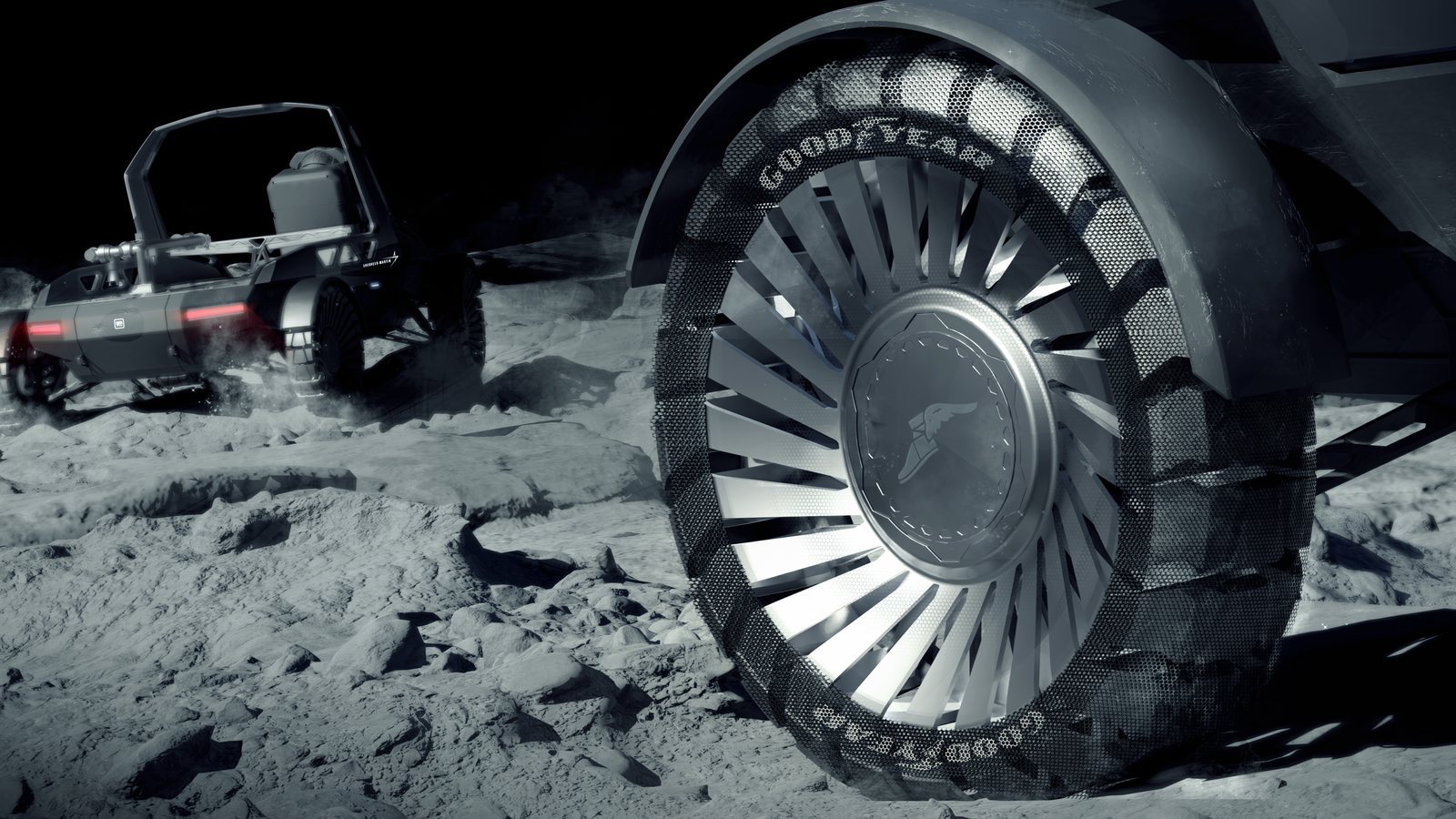
When the new lunar mobility vehicle takes its first spin around the moon, it will be sporting a familiar logo on its wheels: Goodyear’s. But unlike the tires on your car, the lunar vehicle’s will be airless, made entirely of metal and clad in mesh.
Yet, the lunar tire isn’t entirely a separate beast, according to Goodyear Senior Program Manager for Non-Pneumatic Tires Michael Rachita. The tires might be rolling around the moon, but they are closely related to some Earth-bound technology—and will help that technology evolve even further.
- Rachita chatted with us recently about Goodyear’s contributions to the lunar mobility vehicle, which is being designed and built by Lockheed Martin and GM for deployment later this decade (read our interview with Lockheed Martin Vice President for the Lunar Exploration Campaign Kirk Shireman).
- It is intended to stay on the moon for years, both supporting NASA missions and functioning autonomously when the astronauts are not around. Here’s what Rachita told us about the tires that will make it all possible.
The design: A traditional rubber tire simply wouldn’t work on the moon, Rachita explains. It wouldn’t hold its air pressure in the vacuum of space, and without an atmosphere to filter out the sun’s radiation, the rubber would quickly degrade.
- Instead, Goodyear will be using metal alloys, such as aluminum and special steels. As Rachita puts it, “You can tap into the standard materials that are used in satellites as a starting point”—materials that are already tried and tested for space.
The environment: These are some of the environmental factors that engineers must consider, says Rachita.
- Temperatures: The moon undergoes extreme transitions in temperature, ranging from -280 degrees Fahrenheit at night to 260 degrees Fahrenheit during the day.
- Gravity: At only 1/6th that of Earth’s, the moon’s gravity changes the calculation of flexibility. The metal tires act something like a spring, but since objects bear down with much less weight on the moon, the tires must be correspondingly more flexible than they would have to be on Earth, Rachita says.
- Moon dust: The lunar regolith is sharp, abrasive and electrostatic, says Rachita, and acts something like very soft sand. In designing these tires, Goodyear has taken inspiration from off-roading techniques used for sandy or rocky areas, such as deflating tires to create a soft, broad surface that almost floats over the landscape.
The tests: Some of the testing is familiar, including sessions on a traditional flat track at Goodyear’s headquarters in Akron, Ohio. The track has a rotating band like a treadmill, which the testers must slow down, as the rover will top out at 12 mph (for safety reasons). The engineers can still learn a lot from the tires’ behavior even in Earth’s gravity, Rachita says.
- For other tests, however, the company has had to “create an event,” he says. That includes finding facilities with cryogenic chambers to test the tires’ durability in extreme temperatures.
- To mimic the lunar surface, the company will use soil rigs filled with simulated lunar soil developed by NASA.
The big question: Rachita responds to our inevitable question—“How do you change a tire on the moon?”—with a simple answer: you don’t.
- In fact, he adds, the technology that gives these tires a high degree of redundancy—allowing them to sustain damage and still keep going—has important applications here on Earth.
- “This is where it all connects for Goodyear and its strategy,” he says.
A tire revolution: Goodyear is working to make products that are “maintenance free,” Rachita explains, which is essential to new developments in mobility. Airless tires have an enormous advantage for both electric and autonomous vehicles, he says.
- First, electric vehicles have far fewer parts to maintain (like spark plugs and oil systems), so it makes sense to eliminate another source of frequent maintenance—air-filled tires.
- Meanwhile, if an autonomous vehicle gets a flat, who’s going to fix it? As Rachita says, often no one will be around; AVs will spend a lot of time traveling without passengers to their next pickup points.
- Air-filled tires don’t have redundancy, as Rachita points out—you get a flat tire and it’s an immediate problem. But on an airless tire with a “tension bridge” that supports its structure, up to 20% of the spokes can break without requiring a change. And if the mesh covering the tire tears, you don’t immediately start losing all of the air inside it.
Just in case . . . The lunar mobile’s tires will be attached rather traditionally, with either multiple lugs or one lug (as found on racecars)—so they could technically be changed on the moon. But the plan is to ensure this never becomes necessary, says Rachita.
The last word: Creating tires for a long-lasting lunar vehicle is a “challenge to engineering thinking,” as Rachita puts it. It’s the sort of challenge that will pay off for the rest of us, too.
“Manufacturing on the Moon”: The Next Lunar Vehicle
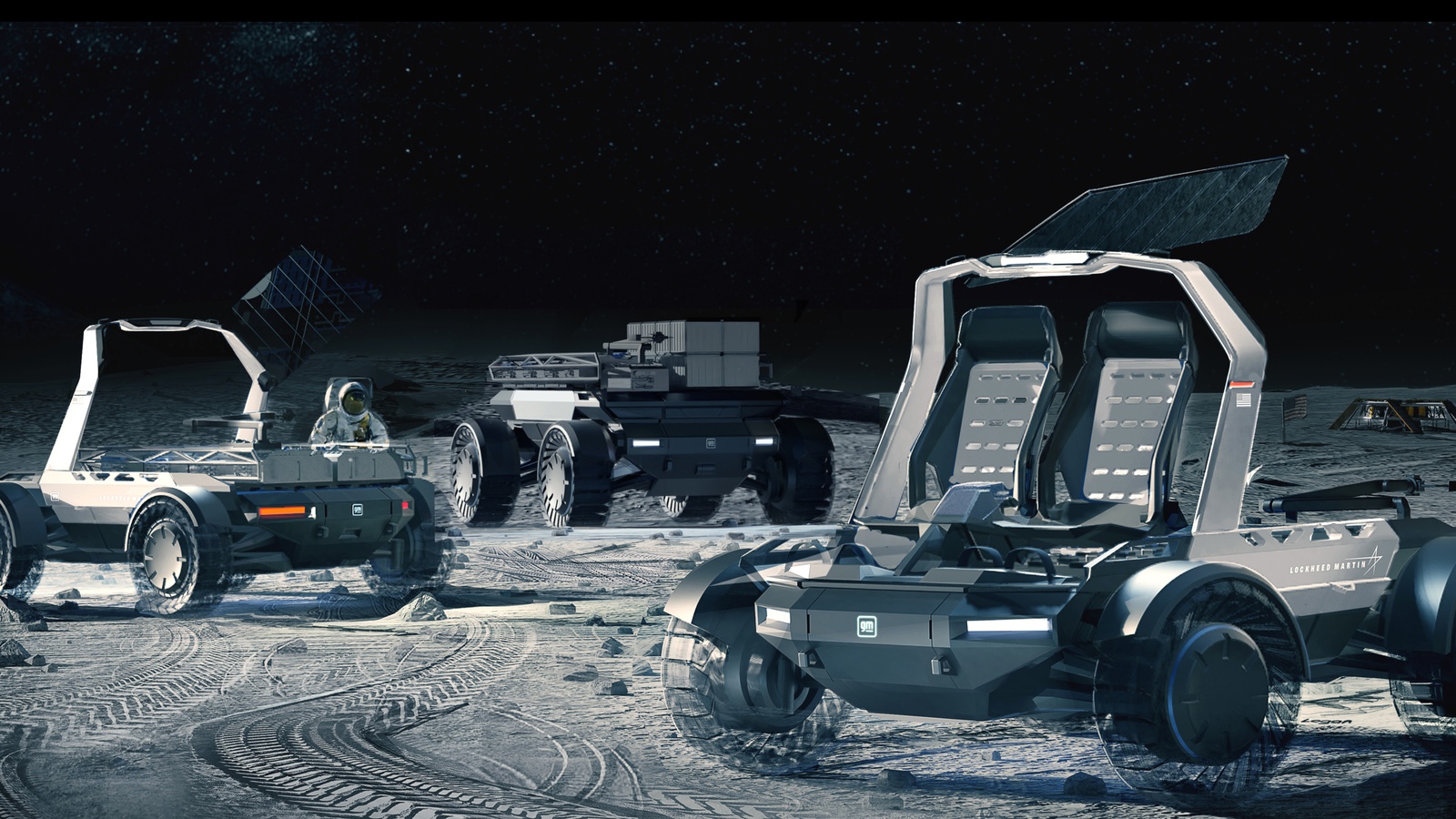
When astronauts return to the surface of the moon in 2025, they will find a car waiting to pick them up. The new lunar mobility vehicle, designed and built by Lockheed Martin and GM with tires by Goodyear, will be sent up prior to the humans—but more excitingly, it will stay there long after they leave. In fact, the vehicle will remain on the moon for many years, performing experiments and fulfilling commercial contracts autonomously in between NASA missions.
We were delighted to learn all this and more in a recent interview with Kirk Shireman, Lockheed Martin’s vice president for the Lunar Exploration Campaign, who told us all about the astonishing technology involved. Here’s what we learned about the vehicle, which will be the first on the moon since 1972. Though those rovers were the “finest technology” of their day, as Shireman says, the new lunar vehicle is certainly the finest of ours.
The new design: To withstand the moon’s environment for years on end, the vehicle will require state-of-the-art components and materials. The companies are still in the “materials selection phase,” says Shireman, but he did share several of the broad requirements.
- The vehicle will use the latest in battery technology, allowing it to power down almost completely during the long, frigid lunar night (which, like a lunar day, lasts for 14 Earth days). Temperatures will range from -280 degrees Fahrenheit at night to 260 degrees Fahrenheit during the day.
- Not only must the materials hold up under the temperature shifts, which occur very rapidly, they must also withstand the sharp, abrasive electrostatic dust that “clings to everything,” says Shireman.
- In addition, the vehicle must be light—it’s tough to transport things to the lunar surface, and every ounce counts.
- And last, safety is of course paramount; the vehicle must be easy to enter and exit for the astronauts. The vehicle’s speed will top out at about 12 mph, also for safety reasons.
Testing: The moon has only one-sixth of the Earth’s gravity, and it’s pretty much impossible to simulate driving in such conditions while here on Earth. The engineers must rely on virtual reality as well as some physical tests, Shireman explains.
- GM’s “driver in the loop” simulator fulfills this function, allowing engineers to “drive” in the environment and gravity of the moon. (Shireman, who recently tried out the simulator, tells us that it is extremely challenging.)
- However, physical testing does have some important uses. Just like any other autonomous vehicle, the lunar vehicle must be tested to ensure it “can’t get into a place it can’t get out of,” as Shireman puts it—and that can be done in Earth’s gravity.
- Engineers will also perform other physical tests on the materials, including lighting tests to ensure the vehicle’s sensors can cope with the blinding light on the moon, where everything looks either white or black.
Advanced manufacturing . . . for the moon: Once the vehicle is on the moon, Lockheed Martin and GM will face a challenge very familiar to other manufacturers: deciding how to collect, organize and transmit data from their equipment.
- The vehicle will monitor its own performance and the lunar environment via a host of sensors. It can also physically carry other instruments for experimentation, says Shireman.
- However, the lunar program will “have more data than pipe” (i.e., the means of returning data to Earth) and will need to prioritize how much and how frequently it transmits information.
- And unlike manufacturers communicating with their equipment on Earth, the engineers will have to cope with delays in response time, which could take several seconds or longer, says Shireman. If the rover is located on the back side of the moon, the signal must go through a relay satellite before reaching Earth.
No garage: Out of curiosity, we asked Shireman an earthling’s question: will the lunar vehicle have some sort of garage where it can seek protection from the cold or sun?
- The answer to that is no—it will simply park itself wherever it happens to be to wait out the night. It’s “much more useful if you can avoid going back anywhere,” says Shireman, because that means the vehicle is not tied down to one spot.
- Even though it would be nice to be able to park it in a garage, which would keep the vehicle warm, the tradeoff is not worth it, he explains.
Moon activities: The lunar missions will have tremendous scientific value, not least because these vehicles can roam widely and produce granular maps of the moon’s landscape. However, they are designed for commercial applications as well.
- The companies are still exploring their options, Shireman says, but these may include transporting commercial lunar payloads and helping other companies (and countries) explore the moon’s resources.
- Then there is the “coolness” factor—people might pay just to interact with this technology, for example by driving the rover telerobotically from Earth. (Sounds like fun!)
The last word: As Shireman says, the rover itself is the foundation of a new venture, not an end point. “The rover isn’t just a thing to be manufactured; it will help us manufacture things on the moon”—and advance lunar exploration and commercialization where it hasn’t gone before.
Take a look: Check out the lunar mobile design in action here, in an animated video made by GM and Lockheed Martin.
Manufacturers Unite to Protect Intellectual Property

Manufacturing associations across almost 40 states joined with the NAM in calling on the White House to safeguard intellectual property at the World Trade Organization.
What’s happening: The WTO is considering waiving IP rights for COVID-19-related vaccines and treatments—an action that would harm American manufacturers that have led the fight against COVID-19.
What we’re doing: The NAM has previously pushed back aggressively on the proposal, and alongside manufacturers nationwide, we are stepping up our work. In a letter addressed to Secretary of State Antony Blinken, United States Trade Representative Katherine Tai and other senior Biden administration officials, the NAM joined nearly 40 state manufacturing organizations in arguing that waiving these IP rights will negatively affect American manufacturing—as well as the overall fight against COVID-19.
- “This proposal would weaken critical global rules for IP protections that support innovation in a range of manufacturing sectors by including not only broad new categories of COVID-19 products, but also their upstream supply chains. Furthermore, an expanded waiver allows commercial rivals like China to unfairly seize American innovation to benefit their domestic economies.”
The importance of IP: Those manufacturing associations argue that IP gives an incentive for manufacturers to broaden research and development and a reason to invest in expanding industries. American manufacturers are concerned that the IP waivers would expose them to unfair competition from foreign rivals and would take away employment opportunities from Americans.
The last word: “Our organizations strongly urge the Biden administration and Congress to stand with manufacturers and workers to firmly oppose an expanded IP waiver at the WTO. We stand ready to work with you and your agencies in support of real solutions to the pandemic and future health crises—and to advance U.S. leadership in manufacturing and innovation.”
A Winning Formula at AB InBev
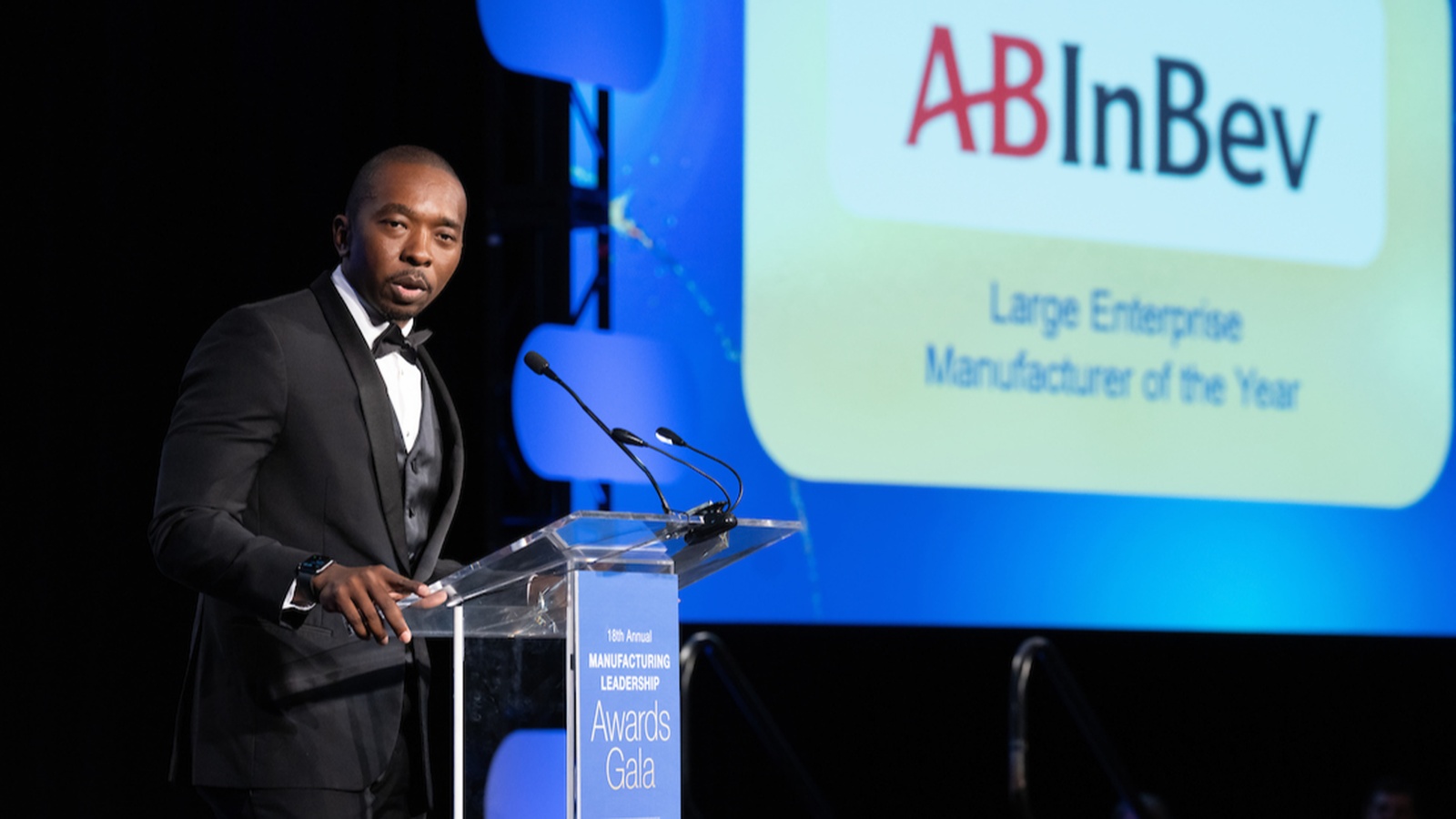
Anheuser-Busch InBev recently got to raise a toast to its team members—not just once, but four times.
After being named a 2022 Manufacturing Leadership Awards Gala winner in three categories—AI and Machine Learning, Digital Network Connectivity and Operational Excellence—the company took home the ultimate prize: the MLC’s Large Enterprise Manufacturer of the Year. (The MLC is the NAM’s digital transformation partner.)
Recipe for success: What’s brewing in AB InBev’s recipe for success? According to Global Vice President of Engineering and Operations Marcelo Ribeiro, a focus on world-class performance in all of the company’s operations.
- This means leveraging disruptive technologies and empowering frontline teams to drive sustainable and reliable performance, all with the dream of “to create a future with more cheers.”
Utilizing AI: One of AB InBev’s award-winning projects was its innovative use of AI to improve utilities performance. The company implemented a set of smart algorithms to optimize the performance of its air compressors and boilers, giving managers and operators a real-time, utilities-performance dashboard that alerted them when a target was not being hit.
- Started as a pilot in just five breweries, the project was so successful, the company rolled it out to more than 30 other breweries worldwide.
- AB InBev plans to expand the algorithm beyond boilers and compressors to provide utilities usage forecasts and prediction models.
Preventing downtime: Another AB InBev winner was the firm’s approach to attaining 100% reliability and optimization of all equipment and processes. This led to the development of a tool that monitors equipment performance and prescribes maintenance actions, both of which minimize downtime.
- The company’s ambitious reliability goal also creates safer working conditions in breweries and maximizes sustainability by reducing consumption of raw materials, packaging and spare parts.
Lessons on digital transformation: While technology can provide solutions to problems, resist the urge to simply “do” technology for technology’s sake, Ribeiro cautioned. First identify a problem, then determine how technology can help fix it. Don’t work the other way around.
- “One thing we have learned in recent years is that future is becoming less predictable,” Ribeiro said. “Manufacturing needs to create an ecosystem in the future where we can learn from each other. And we have to actually enable that to happen as becoming more resilient will require building a collaborative ecosystem.”
Nominations are being accepted now for the 2023 Manufacturing Leadership Awards. Find complete details here.
Creators Wanted “Lends a Helping Hand” in S.C.
Last week was a milestone for the Creators Wanted Tour—it marked the first time the nationwide initiative returned to a community and got to see how perceptions of manufacturing had changed since its first visit.
Welcome back: The Creators Wanted Tour, a joint venture of the NAM and its workforce development and education partner, The Manufacturing Institute, returned to host and champion sponsor Nephron Pharmaceuticals Corporation in West Columbia, South Carolina, in the 11th stop of the roadshow, which took place Oct. 4–7.
Happy MFG Day! On MFG Day, Oct. 7, Creators Wanted campaign co-chair Lou Kennedy, president, CEO and owner of Nephron Pharmaceuticals Corporation, and her team hosted the tour stop’s premier event at its new Nephron Nitrile Glove Factory. The 426,000-square-foot facility is scheduled to open next month and will produce nitrile gloves used in hospitals and sterile rooms globally.
- The protective-glove shortage in the U.S. during the pandemic inspired Kennedy to build the factory, which is set to produce 2 million gloves a year at full capacity.
- South Carolina legislators from both sides of the political aisle were on hand for a tour of the site. House Democratic Majority Whip James Clyburn and Republican Reps. Joe Wilson and Jeff Duncan joined hundreds of local students, educators, community leaders and manufacturers to view and learn more about the campaign and its resources.
Ready for the “boom”: “There is a manufacturing boom taking place all over the country,” Majority Whip Clyburn said. “We’ve got to focus on getting these young people prepared” for manufacturing careers.
- As Rep. Wilson said, “The opportunities for manufacturing just can’t be better.”
- “401(k), great salary—average wage of 75 to 80K—clean and beautiful working conditions and hard work with a lot of fun,” Kennedy said of jobs at Nephron, while extolling opportunities at modern manufacturers across the state and in nearby communities.
- Major Creators Wanted supporters Honda and Trane Technologies also have operations in the Palmetto State, and several other campaign sponsors, including Chroma Color Corporation, are within a short distance of West Columbia.
More career guidance: Students seeking tailored advice about their professional futures got it from representatives of FactoryFix, official recruiting partner of Creators Wanted, who were on hand to meet and coach job seekers.
- South Carolina Chamber of Commerce President and CEO Bob Morgan, whose organization is a tour partner, was on site with his team to give students information on manufacturing opportunities in South Carolina.
- On Friday, Creators Wanted sponsor Autos Drive America had an exhibit showing attendees the types of vehicles being manufactured in South Carolina.
Women in manufacturing: During a “fireside chat” panel on the tour stop, Kennedy was joined by Autos Drive America President and CEO Jennifer Safavian and MI President Carolyn Lee to discuss the importance of advancing more women in manufacturing.
- “Growing up here in the deep south 20, 30 years ago, we were supposed to be teachers or … nurses; we weren’t supposed to be pharma CEOs,” Kennedy said. “And so, my goal is to help every young lady be what she wants to be, even if it’s the nontraditional career path. … If you want to be a super-genius chemist, you can do that. If you want to be a super-genius engineer, you can do that.”
- Echoed Safavian, “I think the message [of Creators Wanted] is, ‘Don’t be afraid to ask questions. Don’t be afraid to try something. For women especially, this is a terrific opportunity. … A lot of people think manufacturing is dark, dirty, dangerous. It is not. … it is the complete opposite.”
Calling all veterans: Modern manufacturing is also a natural fit for those who have been in the military, speakers told the audience during another panel discussion.
- “I started at Nephron as a senior system analyst, and throughout my career everything that I was faced with at Nephron I’d already seen in the military,” said Air Force veteran Eric Jackson, now a senior IT security analyst at Nephron. “So, I think the [military] training … is what prepared me for this job.”
The reach: The South Columbia 2022 tour stop, made possible by additional support from Dow, Honda and Nephron Pharmaceuticals, was a record breaker.
- More than 700 students from 13 schools—most located in traditionally underrepresented communities—participated in the tour stop’s events. Last year, those numbers were 500 and seven, respectively.
- This year’s West Columbia email signups—people wishing to learn more about manufacturing careers—brought Creators Wanted’s total signups to more than 520,000.
The last word: The tour stop may have been best summarized by one young student who attended the events. “Creators Wanted,” she said, “is a helping hand.”